
Regular readers know that in this weekly series, we’ve been looking at the National Parks of Great Britain. Each week, we showcase some of the highlights and special places, while also sharing tips on where to stay. In this week’s National Park Spotlight, we’re returning to the south west. Our destination? Exmoor.
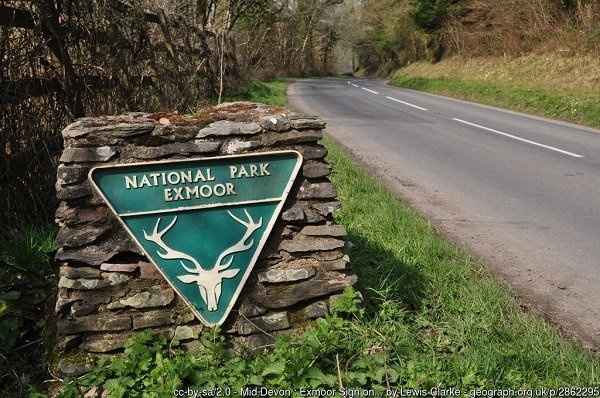 Exmoor National Park was created in 1954. While Dartmoor National Park is in the southern part of Devon, Exmoor covers 267 square miles in northern Devon and Somerset. The park has several small villages within its boundaries. It also features 34 miles of coastline, some of the most remote in the UK because of the cliffs. More than 2 million people visit Exmoor each year.
Exmoor National Park was created in 1954. While Dartmoor National Park is in the southern part of Devon, Exmoor covers 267 square miles in northern Devon and Somerset. The park has several small villages within its boundaries. It also features 34 miles of coastline, some of the most remote in the UK because of the cliffs. More than 2 million people visit Exmoor each year.
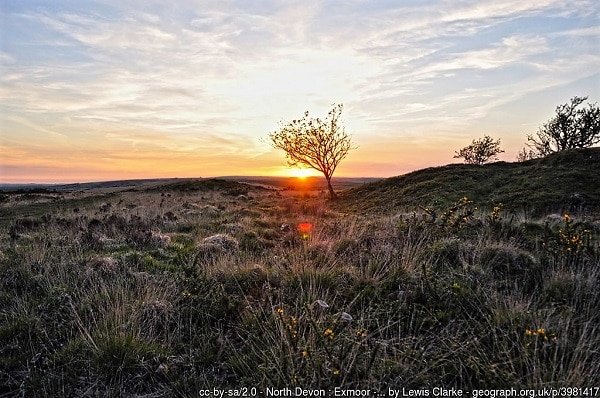 The park has three visitor centres at Dulverton, Dunster, and Lynmouth. Each has information about Exmoor’s natural history and schedules of guided walks and other activities. Other independent visitor centres are located in Combe Martin, Lynton, Minehead, and Porlock. Check out the Visit Exmoor website for information about activities and accommodations in the area.
The park has three visitor centres at Dulverton, Dunster, and Lynmouth. Each has information about Exmoor’s natural history and schedules of guided walks and other activities. Other independent visitor centres are located in Combe Martin, Lynton, Minehead, and Porlock. Check out the Visit Exmoor website for information about activities and accommodations in the area.
What to do.
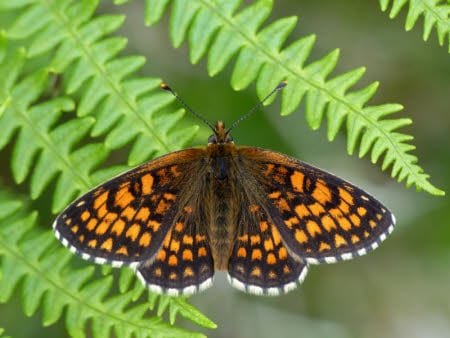 Exmoor’s landscape is a combination of wooded coastline and open moorland. The area is the site of a former ancient hunting forest. It served as inspiration for the remote setting of classic novel Lorna Doone by R.D. Blackmore. (See our series coming later this year on British literary landscapes.) In addition to having some of the nation’s most remote shoreline, Exmoor has the highest cliffs on the British mainland and the highest and lowest tides in Europe. A number of lichens and trees that can be found nowhere else make their homes here. And let’s not forget the beautiful heath fritillary butterfly, one of Britain’s rarest butterflies. Close to extinction in the 1970s, the butterfly is making a strong recovery and lucky visitors may catch sight of one.
Exmoor’s landscape is a combination of wooded coastline and open moorland. The area is the site of a former ancient hunting forest. It served as inspiration for the remote setting of classic novel Lorna Doone by R.D. Blackmore. (See our series coming later this year on British literary landscapes.) In addition to having some of the nation’s most remote shoreline, Exmoor has the highest cliffs on the British mainland and the highest and lowest tides in Europe. A number of lichens and trees that can be found nowhere else make their homes here. And let’s not forget the beautiful heath fritillary butterfly, one of Britain’s rarest butterflies. Close to extinction in the 1970s, the butterfly is making a strong recovery and lucky visitors may catch sight of one.
Exmoor is a wonderful spot for walkers, with more than 600 miles of trails. There are the usual shorter trails, but longer walks include the Coleridge Way, 51 miles of poetic inspiration, the Two Moors Way which runs between Dartmoor and Exmoor, and a stretch of the South West Coast Path.
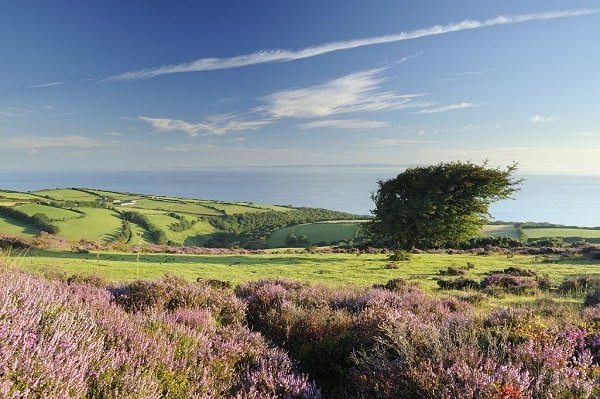
The wide open expanses of moorland are perfect for horse riding and cycling. Both mountain bikers and road cyclists can find plenty to keep them busy. And although few think of Exmoor when considering rock climbing, there are some good spots for beginners or more experienced climbers, if you know where to go. The Valley of Rocks near Lynton is a popular area for climbers of all levels.
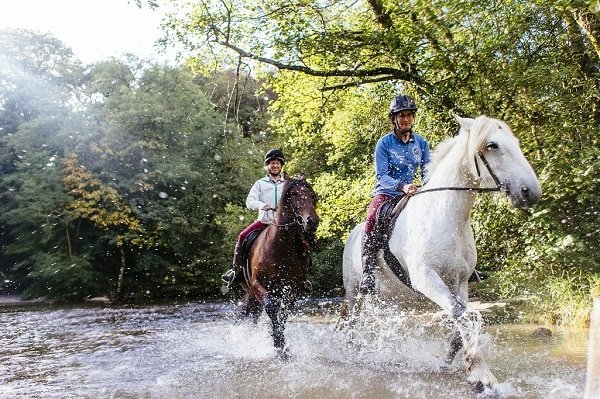
Since so much of Exmoor’s coastline is difficult or impossible to reach by foot, sea kayaking is one way to explore all that it has to offer. However, the tides and currents along this part of the coast can be deceptively dangerous. Inexperienced kayakers should not venture out alone. Instead, sign up for guided lessons from a reputable company.
For another type of moorland adventure, be prepared to stay out after dark. Without major towns or cities nearby, Exmoor National Park is free from light pollution. It has been named the first International Dark Sky Reserve in Europe. If stargazing is your thing, this is THE place to do it. Regular guided night walks and campouts are listed online and October 2017 will see Exmoor’s First Dark Sky Festival. The ten-day event will feature a broad selection of family-friendly activities, from nocturnal wildlife walks and guided stargazing to themed daytime activities.

What to see.
The small villages and hamlets scattered through Exmoor are full of history. The Dunster Museum and Doll Collection is located within the charming medieval village of the same name. The museum contains one of the largest doll collections in the country. Dunster Castle, now managed by the National Trust, dates back 1,000 years. For 600 years until 1976, the Luttrell family lived on the site. A fully-working restored watermill stands in the grounds, and the extensive gardens contain a huge diversity of plant life. Take a ride on the Dunster Castle Express, a steam train that goes from Bishops Lydeard with magnificent coastal views along the way.
Also worth a visit is the Quince Honey Farm, a working farm since 1949. Take a tour, learn about the bees, see how honey is produced, and make some beeswax candles.
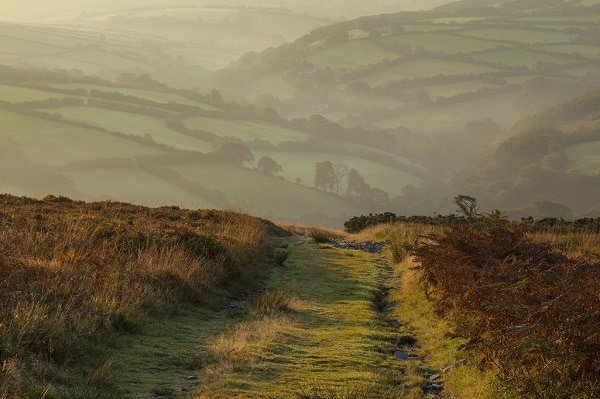
Music lovers might want to schedule their visit to coincide with the Simonsbath Festival. For six or seven weeks in May and June, musicians from around the world descend upon the tiny village of Simonsbath. Whether your tastes run from traditional folk to classic jazz, traditional Latin American or South African vocals, you will probably find it among the festival’s events.
Avoid the crowds.
The southwest of England attracts thousands of visitors during July and August, when families rush to the beaches during school holidays. However, the National Park will still have plenty of peace and quiet to be found, even at peak season, so don’t be too concerned about crowds.
Where to stay.
Camp sites throughout the park offer the perfect location for enjoying the night sky. Information about wild camping within the National Park can be found here. Camper vans are welcomed, at the proper sites. A good guide to campsites and other accommodations in the park is Visit Exmoor.
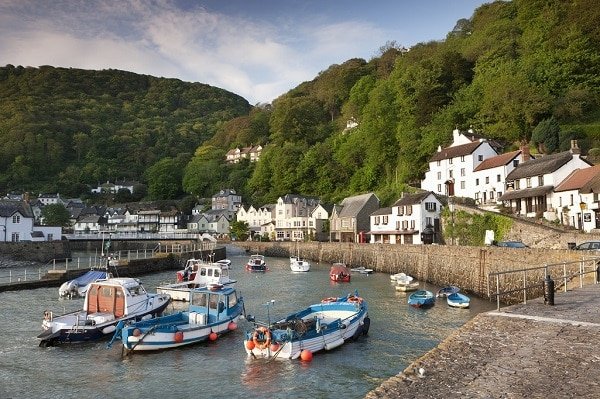
Whatever your accommodation preference–hotel, bed and breakfast, rural farmhouse, or self-catering–you will find a huge range of options to suit a variety of budgets. In our sidebar, you can find affiliate links to hotel chains and cottages within the area. Coast and Country Cottages is currently offering a number of special discounts for summer holidays booked before June 7th.



3 thoughts on “National Park Spotlight: Exmoor”
Comments are closed.